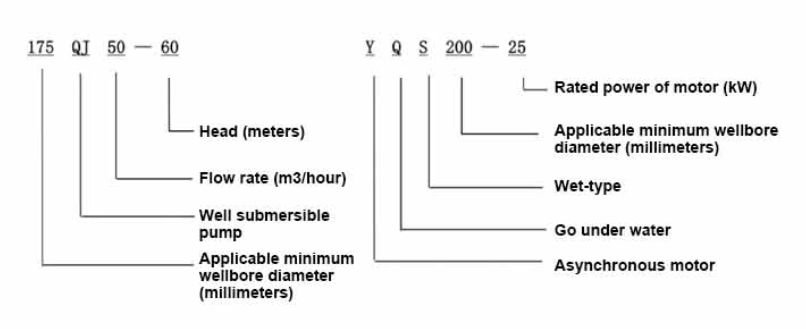Aug . 14, 2024 19:52 Back to list
Battery-powered submersible pumps for efficient water removal in various applications and environments
The Advantages of Battery-Operated Submersible Pumps
In recent years, the demand for efficient and environmentally friendly water management solutions has led to the rise in popularity of battery-operated submersible pumps. These innovative devices are designed to operate underwater, making them ideal for a variety of applications, from residential drainage to agricultural irrigation. This article explores the key features, advantages, and potential applications of battery-operated submersible pumps.
What is a Battery-Operated Submersible Pump?
A battery-operated submersible pump is a type of pump that is submerged in fluid and operates using a battery as its power source. Unlike traditional electric pumps that require a direct electrical connection, these pumps rely on rechargeable batteries, rendering them versatile and incredibly portable. Typically housed in waterproof casings, submersible pumps are robust and capable of handling significant depths, making them suitable for various environments.
Key Advantages
1. Portability and Convenience One of the primary benefits of battery-operated submersible pumps is their portability. Without the need for cumbersome power cords or generators, these pumps can easily be transported to remote locations, making them perfect for emergency water removal or temporary irrigation setups.
2. Environmentally Friendly Operating on batteries means that these pumps do not emit harmful emissions during use, making them a more environmentally friendly option compared to gas-powered pumps. Many models come equipped with energy-efficient batteries that minimize power consumption and reduce the carbon footprint associated with water pumping.
battery operated submersible pump

3. Ease of Use Battery-operated submersible pumps are designed to be user-friendly. They typically feature straightforward operation with easy-to-follow instructions, making them accessible to both professionals and non-experts alike. Many models also have built-in features such as automatic shut-off systems, further enhancing user safety and convenience.
4. Versatile Applications These pumps can be used in a variety of settings, including homes, gardens, construction sites, and agricultural fields. They are particularly useful for dewatering basements, emptying flooded areas, or extracting water from wells or cisterns. In agricultural settings, they can efficiently irrigate crops, especially in remote areas without direct access to power.
5. Reduced Noise Levels Battery-operated pumps typically produce less noise than their gas-powered counterparts, making them an excellent choice for residential areas or noise-sensitive environments. This feature allows for a quieter operation, which is especially advantageous during nighttime use or in areas where noise regulations are in place.
Potential Limitations
While battery-operated submersible pumps have numerous advantages, there are some limitations to consider. The capacity and run time of a battery-operated pump depend on the size and type of the battery used. Larger capacities may require longer charging times, and continuous operation may necessitate extra batteries or a backup power source. Additionally, the initial cost of high-quality battery-operated pumps may be higher compared to traditional pumps, although the long-term savings on fuel and maintenance may offset this expense.
Conclusion
Battery-operated submersible pumps represent a significant advancement in portable water management solutions. Their versatility, eco-friendliness, and ease of use make them an attractive option for a wide range of applications. As technology continues to improve, we can expect battery-operated submersible pumps to become even more efficient and accessible, fulfilling the increasing demand for sustainable water pumping solutions in various industries. Whether for domestic, commercial, or agricultural use, these pumps offer a reliable and innovative means to manage water effectively.
-
Submersible Water Pump: The Efficient 'Power Pioneer' of the Underwater World
NewsJul.01,2025
-
Submersible Pond Pump: The Hidden Guardian of Water Landscape Ecology
NewsJul.01,2025
-
Stainless Well Pump: A Reliable and Durable Pumping Main Force
NewsJul.01,2025
-
Stainless Steel Submersible Pump: An Efficient and Versatile Tool for Underwater Operations
NewsJul.01,2025
-
Deep Well Submersible Pump: An Efficient 'Sucker' of Groundwater Sources
NewsJul.01,2025
-
Deep Water Well Pump: An Efficient 'Sucker' of Groundwater Sources
NewsJul.01,2025
-
 Submersible Water Pump: The Efficient 'Power Pioneer' of the Underwater WorldIn the field of hydraulic equipment, the Submersible Water Pump has become the core equipment for underwater operations and water resource transportation due to its unique design and excellent performance.Detail
Submersible Water Pump: The Efficient 'Power Pioneer' of the Underwater WorldIn the field of hydraulic equipment, the Submersible Water Pump has become the core equipment for underwater operations and water resource transportation due to its unique design and excellent performance.Detail -
 Submersible Pond Pump: The Hidden Guardian of Water Landscape EcologyIn courtyard landscapes, ecological ponds, and even small-scale water conservancy projects, there is a silent yet indispensable equipment - the Submersible Pond Pump.Detail
Submersible Pond Pump: The Hidden Guardian of Water Landscape EcologyIn courtyard landscapes, ecological ponds, and even small-scale water conservancy projects, there is a silent yet indispensable equipment - the Submersible Pond Pump.Detail -
 Stainless Well Pump: A Reliable and Durable Pumping Main ForceIn the field of water resource transportation, Stainless Well Pump has become the core equipment for various pumping scenarios with its excellent performance and reliable quality.Detail
Stainless Well Pump: A Reliable and Durable Pumping Main ForceIn the field of water resource transportation, Stainless Well Pump has become the core equipment for various pumping scenarios with its excellent performance and reliable quality.Detail
